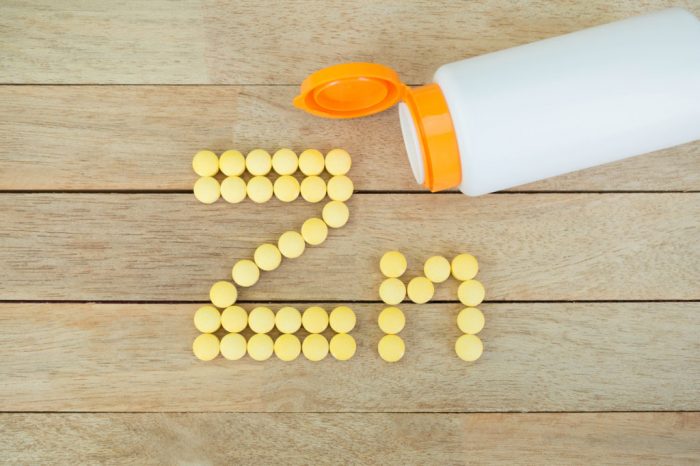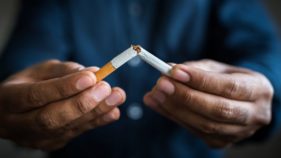Medical experts have warned that non-communicable diseases (NCDs) such as hypertension, diabetes, cancer, cardiovascular diseases are responsible for the majority of Coronavirus disease (COVID-19) deaths in the country.
President, NCD Alliance Nigeria, Olorogun Dr. Sonny F. Kuku, in his opening remarks during a webinar on, “Non-communicable Diseases and COVID-19 in Nigeria – The response”, held Tuesday, July 21, 2020, said: “… We are only seeing the tip of the iceberg and unfortunately, people with NCDs are at greater risk. It is impacting the poorest people and most vulnerable. People with hypertension, diabetes and heart disease are the most vulnerable. We are now seeing stroke as symptom. This means COVID-19, which is an infectious disease is manifesting as an NCD in the form of stroke…”
Vice President, Scientific Affairs, NCDs Alliance Nigeria, Dr. Kingsley Akinroye, has said blamed the situation on the nation’s years of lack of commitment to the course of NCDs. The cardiologist said NCDs account for 29 per cent of deaths in Nigeria.
Akinroye, at the launch of the New Civil Society Solidarity Fund on NCDs in response to COVID-19, harped on the need to strengthen the healthcare system, intensify awareness, increase access to care and treatment, and vote more money for NCDs care and management.
However, the NCD Alliance Nigeria and 19 other global and national NCD Alliances have been awarded $300,000.
Akinroye added that regional and national NCD Alliance including NCD Alliance Nigeria would get $15,000 to address the critical needs of people living with NCDs during the pandemic through advocacy and communication activities that would support stronger organisational stability and resilience
According to the cardiologist, COVID-19 shows many connections between it and NCDs stating that people living with NCDs are more vulnerable to COVID-19 with a substantially higher risk o becoming severely ill or dying from the virus.
The expert said that actions taken to control NCDs in Nigeria include the launch o the First Multi-Sectoral Action Plan or Prevention and Control o NCDs by the Federal Ministry of Health (FMoH) and the NCD Alliance Nigeria Publication of the Handbook on Civil Society Organisation in NCDs.
“Activities in Nigeria will include the development of a database of people living with NCDs in Lagos, Osun, and Federal Capital Territory and by NCD area of focus. Also, establishment and support for people living with NCDs with skills and knowledge, and connect them to NCD Alliance Nigeria, federal Ministry o Health, World Health Organisation and State Ministry of Health in the four states,” he added.
Akinroye further stated that they would build capacity for people living with NCDs on advocacy for their rights to health, prevention, access to treatment and care; provision of support and empowerment
He explained that NCD Alliance Nigeria would develop a directory and a database in the states by area of focus cardiovascular disease, diabetes, cancer, sickle cell disease, respiratory diseases and mental health and also develop advocacy communication materials targeting Lawmakers, Policymakers and opinion leaders that are persuasive and effective to improve prevention, care and access to treatment for people living with NCDs.
The expert, however, tasked the Presidential Taskforce on COVID-19 to mobilise for more testing and awareness amongst the grassroots and also provide free hypertensive and diabetic drugs or the vulnerable population.
Executive Director, NCD Alliance Nigeria, Prof. Akin Osibogun, also presented a paper on “NCDs in Nigeria and COVID-19: The Nigerian experience.”
Osibogun is a consultant public health physician/epidemiologist, a member of Lagos State COVID-19 Response Team and former Chief Medical Director (CMD), Lagos University Teaching Hospital (LUTH) Idi Araba.
Member, Nutrition Committee, Nigerian Heart Foundation (NHF) and Food Scientist, Prof. Isaac Adebayo Adeyemi, spoke on “COVID-19 and Nutrition: Gathering evidence.”
Akinroye delivered a paper on “People Living with NCDs in Nigeria and COVID-19.”
Adeyemi, who is Vice chancellor of Bells University of Technology Ota, Ogun State, and the pioneer Deputy Vice-Chancellor, Ladoke Akintola University of Technology (LAUTECH), Ogbomoso, Oyo State, said functional foods are important to boost the immune system.
Adeyemi said that a well functioning immune system is key to providing robust defence against pathogenic organisms. Adeyemi noted that mortality in people living with NCDs is likely the result of immune decline or impaired immune response.
The expert said that energy is required to fight the virus likewise, protein to produce essential antibodies.
He encouraged intake of Phytochemicals like quercetin from onions, phloretin and also Epigallocatechin gallate (EGCG) as well as conventional foods containing bioactive food compounds like vegetables, fruits, grains, dairy, fish and meat.
“Eat fresh and unprocessed food every day like fruits and vegetables, legumes and whole grains and animal products. Eat a moderate amount o fats and oils. Eat at home to reduce your rate of contact with other people,” he added.
Adeyemi urged the consumption of plant food such as grains, legumes and oilseeds, fruits and vegetables containing vitamins, minerals, fibre and phytochemicals.
He, however, stressed on the need to avoid the intake of caffeine, trans fat while also limiting the intake of salt because they are predisposing factors that contribute to morbidity o patients with COVID-19.
According to a study published in Scholars Journal of Applied Medical Sciences and titled “COVID-19 and Nutrition: Review of Available Evidence”, nutritional support is indicated for depleted patients with respiratory diseases because it provides not only supportive care, but direct intervention through improvement in respiratory and peripheral skeletal muscle function and in exercise performance.
The researchers noted: “A combination of oral nutritional supplements and exercise or anabolic stimulus appears to be the best approach to obtaining significant functional improvement. Patients responding to this treatment even demonstrated a decreased mortality. Furthermore, weight loss and malnutrition opens the door of infection reoccurrence. Poor response was related to the effects of systemic inflammation on dietary intake and catabolism.
“Dietary management of pre-existing diseases has been suggested as a strategy to minimise the potential risk of COVID-19 infection in conditions such as irritable bowel syndrome, Crohn’s and Colitis. WHO, dietetic associations and dietitians have been calling for patients with pre-existing conditions to continue abiding by their dietary advice and nutritional therapy steps received from their dietician if tested positive for COVID-19.”
Meanwhile, according to a World Health Organisation (WHO) survey, prevention and treatment services for NCDs have been severely disrupted since the COVID-19 pandemic began. The survey, which was completed by 155 countries during a three-week period in May, confirmed that the impact is global, but that low-income countries are most affected.
This situation is of significant concern because people living with NCDs are at higher risk of severe COVID-19-related illness and death.
Director-General of the WHO, Dr. Tedros Adhanom Ghebreyesus, said: “The results of this survey confirm what we have been hearing from countries for a number of weeks now.
“Many people who need treatment for diseases like cancer, cardiovascular disease and diabetes have not been receiving the health services and medicines they need since the COVID-19 pandemic began. It’s vital that countries find innovative ways to ensure that essential services for NCDs continue, even as they fight COVID-19.”
The main finding is that health services have been partially or completely disrupted in many countries. More than half (53 per cent) of the countries surveyed have partially or completely disrupted services for hypertension treatment; 49 per cent for treatment for diabetes and diabetes-related complications; 42 per cent for cancer treatment, and 31 per cent for cardiovascular emergencies.
Rehabilitation services have been disrupted in almost two-thirds (63 per cent) of countries, even though rehabilitation is key to a healthy recovery following a severe illness from COVID-19.
In the majority (94 per cent) of countries responding, ministries of health staff working in the area of NCDs were partially or fully reassigned to support COVID-19.
The postponement of public screening programmes (for example for breast and cervical cancer) was also widespread, reported by more than 50 per cent of countries. This was consistent with initial WHO recommendations to minimize non-urgent facility-based care whilst tackling the pandemic.
But the most common reasons for discontinuing or reducing services were cancellations of planned treatments, a decrease in public transport available and a lack of staff because health workers had been reassigned to support COVID19 services. In one in five countries (20 per cent) reporting disruptions, one of the main reasons for discontinuing services was a shortage of medicines, diagnostics and other technologies.
Unsurprisingly, there appears to be a correlation between levels of disruption to services for treating NCDs and the evolution of the COVID-19 outbreak in a country. Services become increasingly disrupted as a country moves from sporadic cases to community transmission of the coronavirus.
Globally, two-thirds of countries reported that they had included NCD services in their national COVID-19 preparedness and response plans; 72 per cent of high-income countries reported inclusion compared to 42 per cent of low-income countries. Services to address cardiovascular disease, cancer, diabetes and chronic respiratory disease were the most frequently included. Dental services, rehabilitation and tobacco cessation activities were not as widely included in response plans according to country reports.
Seventeen percent of countries reporting have started to allocate additional funding from the government budget to include the provision of NCD services in their national COVID-19 plan.
Encouraging findings of the survey were that alternative strategies have been established in most countries to support the people at the highest risk to continue receiving treatment for NCDs. Among the countries reporting service disruptions, globally 58 per cent of countries are now using telemedicine (advice by telephone or online means) to replace in-person consultations; in low-income countries, this figure is 42 per cent. Triaging to determine priorities has also been widely used, in two-thirds of countries reporting.
Also encouraging is that more than 70 per cent of countries reported collecting data on the number of COVID-19 patients who also have an NCD.
Director of the Department of NCDs at WHO, Dr. Bente Mikkelsen, said: “It will be some time before we know the full extent of the impact of disruptions to health care during COVID-19 on people with NCDs.
“What we know now, however, is that not only are people with NCDs more vulnerable to becoming seriously ill with the virus, but many are unable to access the treatment they need to manage their illnesses. It is very important not only that care for people living with NCDs is included in national response and preparedness plans for COVID-19 – but that innovative ways are found to implement those plans. We must be ready to ‘build back better’- strengthening health services so that they are better equipped to prevent, diagnose and provide care for NCDs in the future, in any circumstances.”
According to the WHO, NCDs kill 41 million people each year, equivalent to 71 per cent of all deaths globally. Each year, 15 million people die from an NCD between the ages of 30 and 69 years; more than 85 per cent of these “premature” deaths occur in low- and middle-income countries.










